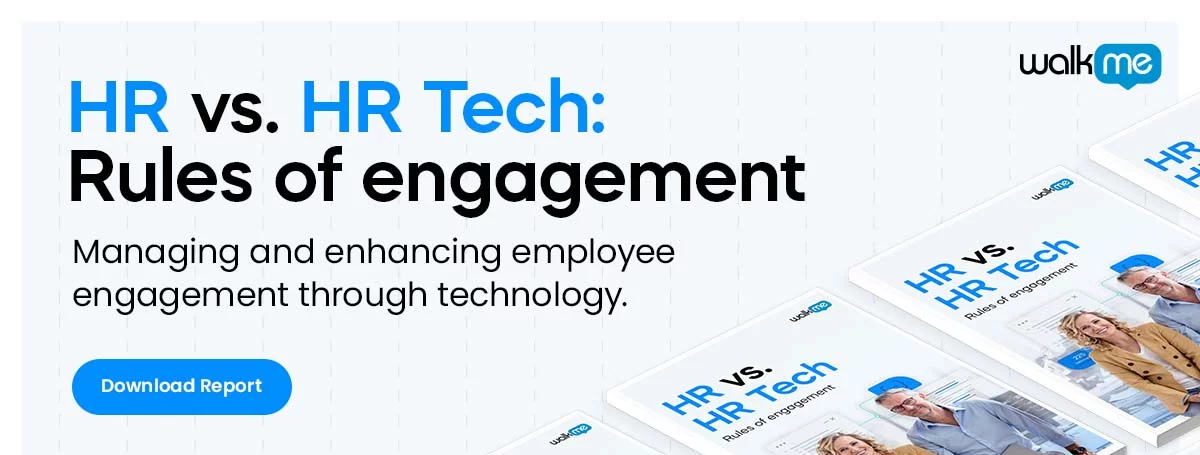
Employee offboarding is not something that every employer pays much attention to. But it is important, since offboarding can offer insight into why employees leave and how the employee experience can be improved.
Also, a structured offboarding process helps to build relationships and ensure that your business maintains a positive reputation in the marketplace.
Below, we’ll cover 12 tips for improving the employee offboarding process for your business.
12 Employee Offboarding Tips
Follow these tips to create a smoother offboarding process that leaves employees with a more positive impression of the business:
1. Use an exit survey
Conducting an exit interview offers you an opportunity to find out why your employee is leaving, if they experienced difficulties working with the organization, and whether there’s anything you can do to retain them.
A well-conducted exit interview will help you better understand how employees view the company. Also, and most importantly, when that information is used properly, it can be used to assess weaknesses within the company and address them.
That information, in turn, can be used to improve any number of factors that influence the employee experience, from employee training to employee onboarding to poor management.
2. Send exit survey data to the right parties
Conducting an exit survey is only useful if that data is actually used.
Therefore, once an employee leaves, it is important to perform a couple of tasks.
One: compile that data for regular high-level reviews by managers and business leaders.
Two: send that data to the appropriate parties. If, for instance, an employee complains about poor software training, that information should be send to the manager in charge of digital training.
3. Use a checklist
A checklist, or a template, is a simple tool that can be used in a wide variety of situations.
Using one during the offboarding process can ensure that no important tasks get forgotten. They can also streamline HR workflows and improve efficiency.
4. Automate when possible
Automation is permeating every business function, including HR.
The right tools, such as HR software platforms or digital adoption platforms (DAPs), for instance, can add automation into key areas off the offboarding process, such as communication.
5. Communicate early and clearly
Once an employee’s departure has been confirmed, it is essential to begin the exit process as early as possible.
One step in this process is communicating with the employee about the process and what needs to be accomplished.
This early communication is even more crucial if the employee is leaving unwillingly, since it can affect how negative or positive the process is – after all, the last thing anyone wants is for an employee to learn about their departure from a third party.
6. Restrict access immediately upon departure
Security should always be a concern among employers, regardless of the employee’s standing with the company.
IT departments should therefore restrict software accounts as soon as the employee’s employment has ceased. This will reduce any risk of unwanted access or potential security breaches.
7. Maintain a positive relationship if warranted
Maintaining a positive relationship with former employees who have left your company can be just as important as maintaining one with current ones.
Employees may, for instance, choose to return someday. And since hiring former employees is more affordable than hiring new ones, this simple step can be both a time saver and a money saver.
8. Finalize all documentation prior to departure
Another basic item to include on the checklist is to finalize all paperwork before the employee leaves.
This includes:
- Benefits packages
- Payroll and severance
- Contracts
Once an employee departs the organization, it may be very difficult to get their help completing these items, so it is important to ensure that none of these essential administrative procedures are forgotten.
9. Make the exit process a positive experience
The departure experience should be as positive as the employee onboarding experience.
One reason is to improve employer branding.
When employees speak well of their former employers, they are more likely to portray the company in a positive light and recommend others to work there.
10. Listen to employees and ensure they feel heard
Employees always want to feel heard.
In part, this comes down to everyone’s need to feel accepted and important, which is one reason why participative decision-making (PDM) has made its way into many businesses. When employees feel heard, it helps to add meaning and value to their role in the organization.
This same concept is equally important when employees leave – if not more so – since poor management and poor communication are common causes of employee departure.
11. Ask and answer employees’ questions
Yet another aspect of creating a positive departure experience is to ensure the employee has closure.
If employees leave with unanswered concerns or questions, then this will certainly have a negative impact on their departure and it could affect their view of the organization.
Reduce this risk by listening to employees, addressing their concerns, and answering any questions they have – and if the HR staff performing the exit interview doesn’t have the answers, offer to find out the answer and follow up later.
12. Regularly assess the offboarding process
Employee offboarding procedures are like any other business process, in that they require upkeep.They should be evaluated from time to time to ensure that they are actually benefiting the organization and producing positive outcomes. One way to do this is to set goal-based metrics and KPIs, then track those to see if they are actually having an impact on the employee experience.
WalkMe Team
WalkMe spearheaded the Digital Adoption Platform (DAP) for associations to use the maximum capacity of their advanced resources. Utilizing man-made consciousness, AI, and context-oriented direction, WalkMe adds a powerful UI layer to raise the computerized proficiency, everything being equal.



